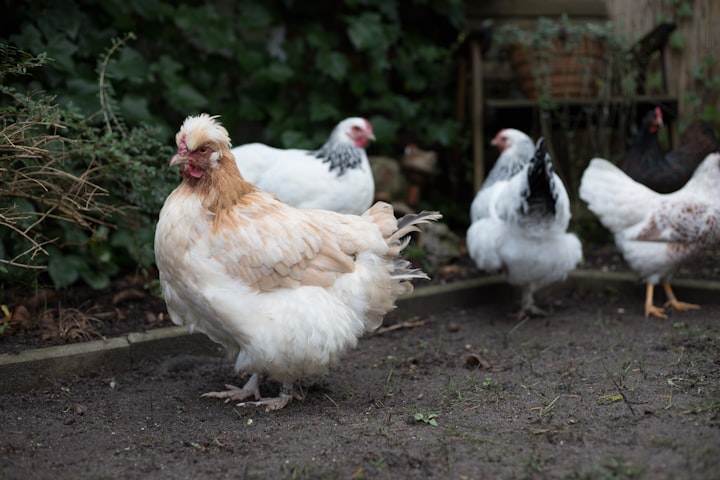"Chicken Not Healthy"
A Journey to Healthier and More Ethical Eating.

It was a warm summer day and Jane was in the kitchen preparing dinner for her family. She had just returned from the grocery store and was eager to start cooking. As she began to marinate the chicken, she remembered a story she had heard about the dangers of consuming poultry.
Jane had always thought that chicken was a healthy option for dinner, but after reading some articles online, she started to doubt her choice. The articles claimed that the chicken she was about to cook was contaminated with harmful bacteria, hormones and antibiotics that could harm her and her family's health.
Jane decided to do some research of her own and found that the way chicken was produced and raised in factory farms was not only inhumane but also very dangerous for human consumption. Chickens were kept in cramped and unsanitary conditions, where they were fed a diet of growth hormones and antibiotics to speed up their growth and prevent diseases from spreading.
Furthermore, the chickens were also subjected to a process known as "chlorine washing", which involved washing the chicken in a solution of chlorine to kill any remaining bacteria. This process, however, only masked the problem, and did not solve it, as the bacteria could still remain on the surface of the chicken, which would then enter the human body when consumed.Jane was shocked and saddened by what she had learned. She felt that she had been putting her family's health at risk by serving them contaminated chicken.
She decided that from that day forward, she would only buy and cook chicken from local farms that raised their chickens in a humane and sustainable manner, without the use of hormones, antibiotics, and other harmful chemicals.
Jane's family was initially skeptical about the change, but after trying the new and healthier chicken, they all agreed that it tasted better and felt better in their bodies. Jane's family became advocates for healthier and more ethical eating, spreading the word to their friends and family, and encouraging others to make similar changes.In the end, Jane learned that sometimes, it is the little things we do in our everyday lives that can have the greatest impact on our health and the world around us. She was proud to have made a change for the better and was happy to have helped spread awareness about the dangers of consuming conventionally raised chicken.
The knowledge about the dangers of conventionally raised chicken spread quickly, and soon people all over the world were demanding healthier and more ethical food options. As a result, local and organic food markets began to pop up, offering fresh, hormone and antibiotic-free chicken, as well as other meats, fruits, and vegetables.
These markets became a hub for like-minded individuals, who were passionate about living a healthy and sustainable lifestyle. They not only sold food but also offered cooking classes, workshops, and community events, where people could come together and learn about healthy eating and cooking practices.
Jane's family also started to grow their own vegetables and herbs in their backyard, and they kept a few chickens for fresh eggs. This not only provided them with a source of fresh and healthy food, but it also helped to reduce their carbon footprint, as they no longer had to travel to the grocery store to purchase food.However, the journey to healthier and more ethical food was not without its challenges.
The conventional food industry fought back, trying to discredit the movement and protect its profits. They claimed that local and organic food was too expensive and that the benefits were overstated. But the growing number of people who were experiencing the benefits of healthier eating were proof enough that this was not the case.
In response to the growing demand for healthier food options, the government also began to take action. They introduced regulations and laws to govern the production and sale of conventionally raised chicken and other meats, ensuring that consumers were protected from harmful chemicals and contaminants.
The regulations also encouraged farmers to adopt more sustainable and humane practices, leading to a much-needed change in the food industry.Years went by, and Jane's family continued to live a healthy and sustainable lifestyle, sharing their knowledge and experiences with others.
They were proud of the small changes they had made, and they were happy to have contributed to a growing movement that was making a positive impact on the world.
In conclusion, the story of chicken not being healthy highlights the importance of being informed and making informed choices when it comes to food. It shows that even the smallest of changes can make a big difference in our health, the health of our planet, and the welfare of animals. The story inspires us to take control of our health and make changes that will benefit us, our families, and future generations.





Comments
There are no comments for this story
Be the first to respond and start the conversation.